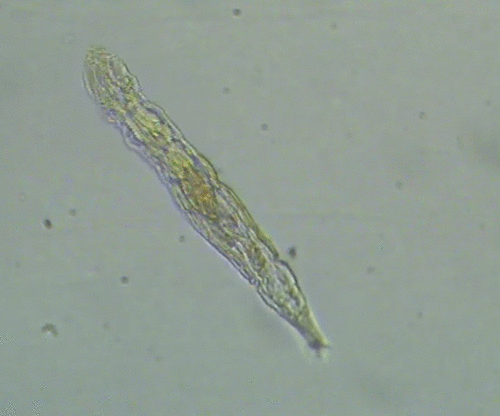Scientists Revive 24,000-Year-Old Worm-Like Animal Frozen In Siberia
Russian scientists have published new research this week that shows a tiny animal called a Bdelloid rotifer can be revived after frozen for tens of thousands of years.
On Monday, the paper titled “A living bdelloid rotifer from 24,000-year-old Arctic permafrost” was published in Cell.com’s “Current Biology” section, which stated the Bdelloid rotifer are some of the toughest multicellular animals of their kind, able to be frozen for thousands of years then revived.
“We revived animals that saw woolly mammoths,” Stas Malavin from the Soil Cryology Laboratory in Russia, one of the co-authors of the study, told The New York Times.
These microscopic, multicellular animals can withstand radiation, extreme acidity, low oxygen, dehydration, and starvation for years.
“They’re the world’s most resistant animal to just about any form of torture,” Matthew Meselson, a molecular biologist at Harvard University, told NYT.
Researchers believed the Bdelloid rotifer could only survive deep freezes for up to a decade until Monday’s paper. With radiocarbon dating, researchers were able to date the worm-like animal to 24,000 years old.
Once thawed, the worm was capable of eating. It was also able to reproduce – which researchers explained it could do without a partner.
“We know for sure now it can withstand tens of thousands of years of cryptobiosis,” Malavin said.
Scientists are still baffled how bdelloid rotifers can protect their cells and organs from a deep freeze and self-fix damaged DNA. The discovery could one day help scientists figure out new technologies that would allow people who are spending hundreds of thousands of dollars for whole body cryopreservation to be revived in the future.
Tyler Durden
Thu, 06/10/2021 – 21:30![]()
Zero Hedge’s mission is to widen the scope of financial, economic and political information available to the professional investing public, to skeptically examine and, where necessary, attack the flaccid institution that financial journalism has become, to liberate oppressed knowledge, to provide analysis uninhibited by political constraint and to facilitate information’s unending quest for freedom. Visit https://www.zerohedge.com
